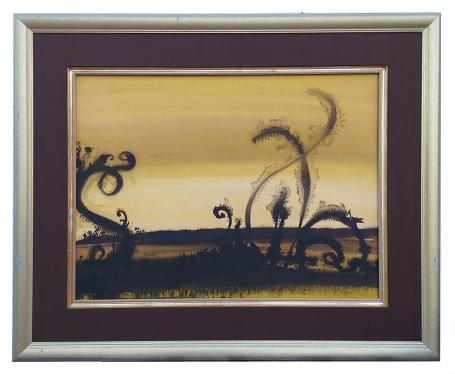
Milota Eugène
Eugène Milota (born Evzen J. Zwi. Schwartz) was a Czech-Belgian artist, born in Stropkow/Czechoslovakia in 1921 and died in Antwerp in 2005. He was a painter, draftsman and watercolorist. He emigrated to Belgium and studied drawing and modeling at the Academy in Antwerp (1939-1942). He fled Belgium during the Second World War. During this period he studied at the Ecole des Beaux Arts in Geneva/Switzerland. After the war he settled back in Belgium, more specifically in Antwerp, and acquired Belgian nationality in 1957. In 1960 he began to deepen his theory of Pictorial music. First, he laid a theoretical foundation, arranging lines and colors in a system with the aim of composing 'pictorial melodies'. He designed 150 drawing examples, which were numbered, inventoried and accurately described. These examples may be regarded as the first part of a 'Pictorial Library'. The drawings were executed in black Bic ballpoint pen, a medium to which he remained faithful until his final period of creation. This Bic ballpoint pen also formed the basis of his idiosyncratic writing. In addition to figurative drawings and caricatures, his early work – mostly graphic work enhanced with watercolor – is alternately symbolist, neo-romantic, fantastic and futuristic. In 1967 he won first prize for watercolor art at an international exhibition in Nice. From 1975 onwards his work became abstract, with recognizable elements from his youth. Building on his introductory theory, he developed a style he called “rhythmic surrealism.” He developed his own techniques by using Indian ink and watercolor, latex and color inks and experimented with Chinese brushes. He also realized a few larger works in oil on canvas, some of which were inspired by Jewish themes and abstract work in acrylic on unalit plate. From the press: “E.M. never settles for the purely visual. From the inexhaustible treasure trove of legends and fairy tales, from 'surreal' depths, from religious illuminations, from the rarefied regions of music, from futurological visions and from archetypes, he purifies 'material' for his pictorial creations, which have an enchanting aspect. E.M. is a delightful artist with an unusually active imagination. Most works are striking because of their swirling-coloured unity. However, an infinite number of details are refined in the whole. E.M. makes a lot of sense for a melodically conceived and elaborated composition. He is a fantasist and a lyricist, who carries us along on the sails of his playful imagination.” (1969). Eugène Milota exhibited between 1960 and 1980, including at the Breughel gallery in Brussels in 1962 and at the De Eik gallery in Antwerp in 1970. His artistic activities spanned over fifty years. He is mentioned in BAS I and Two centuries of signatures of Belgian artists. (Piron)





